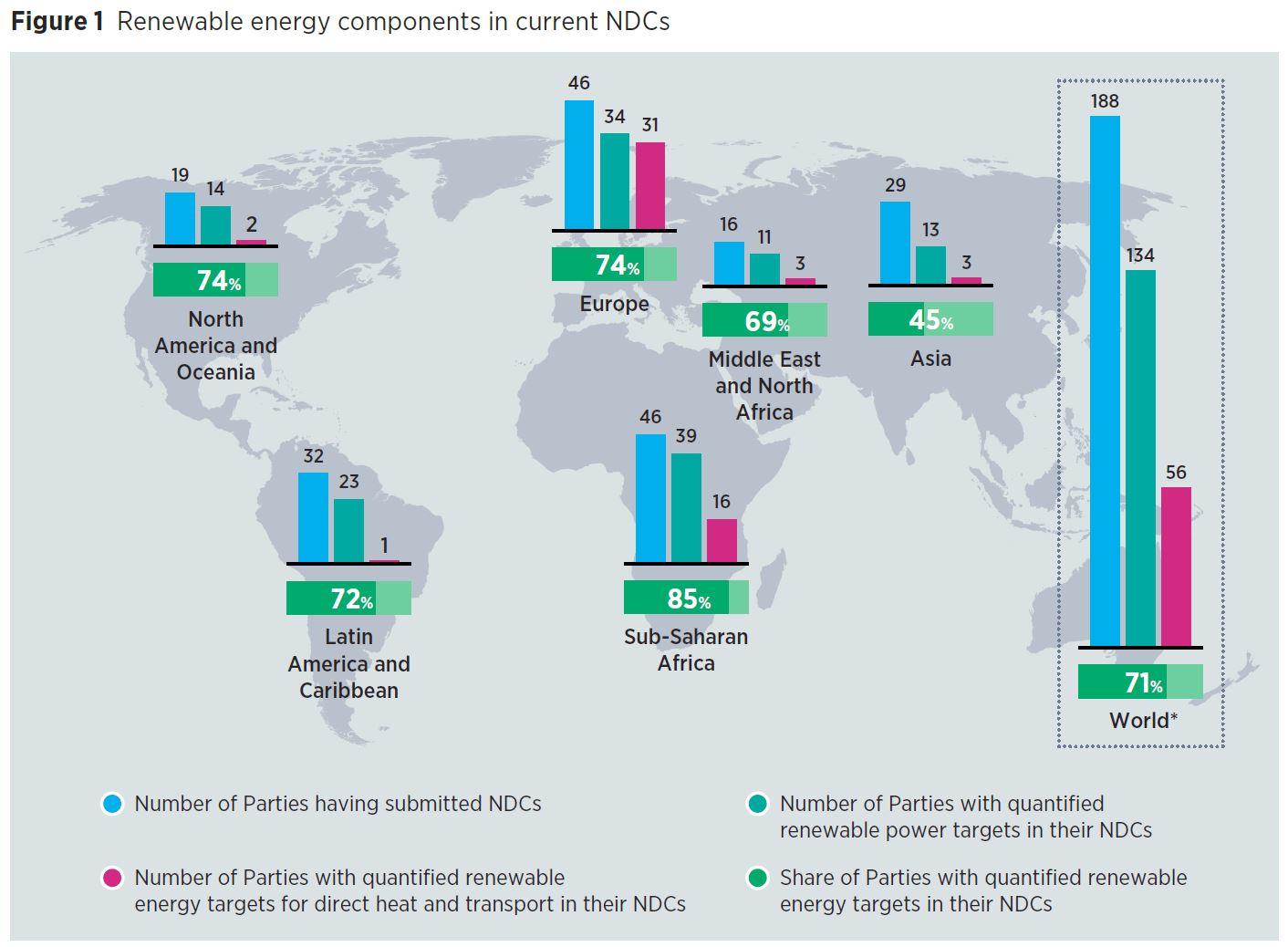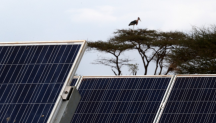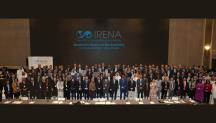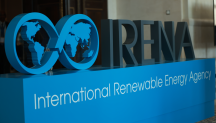.jpg?rev=0e239b414d744d96969856c4fed31a15&w=204&h=107&as=1&bc=ffffff&cc=1&hash=B679BB173066EF054BCAC0CAFB61306D)
.jpg?rev=0e239b414d744d96969856c4fed31a15&w=201&h=105&as=1&bc=ffffff&cc=1&hash=945A6DDFB51F21B2D178FFE561B01465)
The COVID-19 Recovery Offers Opportunities to Address Climate Crisis
Newsletter
On 12 December 2015, virtually all countries adopted the Paris Agreement, pledging to keep the rise in global average temperatures this century to well below 2 degrees Celsius (°C) ideally to 1.5°C. However, projections by the Climate Action Tracker show that current climate commitments laid out in Nationally Determined Contributions (NDCs), will only limit global temperature increase to 2.6°C at best, resulting in potentially catastrophic consequences.
With over two-thirds of global greenhouse gas emissions coming from the energy sector, a transition to cleaner forms of energy is essential for fulfilling the Paris Agreement target. Raising the ambition of renewable energy pledges in NDCs is therefore vital. To date, of the 188 Parties that submitted NDCs, 134 included quantified renewable energy targets. IRENA estimates that their implementation would increase global installed renewable power capacity from 2.5 to 3.6 terawatts (TW) between 2019 and 2030. However, a much higher renewable energy deployment – up to 7.7 TW globally – is achievable by 2030, in a cost-effective way and with considerable socio-economic benefits.
Amid the economic fallout of COVID-19, there are concerns that global efforts and resources may be diverted away from climate change to tackle the pandemic. But the solutions to these crises should not be mutually exclusive. If anything, raising the climate ambitions expressed in the NDCs today is a smart move, both for the economies and climate targets. Here’s why:
- Increasing investment in the energy transition within COVID-19 recovery packages creates jobs and boosts national economies. An average annual investment of USD 2 trillion in clean energy in the recovery phase (2021–2023) could create an additional 5.5 million jobs. Several governments have realised this, announcing multi-billion-dollar green stimulus packages, often with renewables at the core. In August 2020, the now president-elect of the United States, Joe Biden, announced his ambitious plan to allocate USD 1.7 trillion to the green recovery between now and 2030. In July 2020, the European Union earmarked EUR 550 billion for 2021-2027 (or 30% of its overall recovery package) solely to green projects. If such commitments are reflected in updated NDCs, they will significantly contribute to raising climate ambitions.
- One lesson learnt from the COVID-19 pandemic is that only an immediate, collective global response can stem global crises. This is also true of climate change. But waiting for concerted and decisive intervention is not an option the world can afford now. Using the Paris Agreement as a shared platform to accelerate the energy transition is the first step towards progress.
- In 2020, renewables have proven more resilient to the disruption caused by the pandemic than fossil fuels. As a result, renewable energy has become more attractive to investors looking to reduce their exposure to sustainability-related risks. Oil and gas companies are also revising their business strategies to cut their fossil fuel production and integrate higher shares of renewables. This is the kind of momentum that governments can leverage to set higher commitments for renewables in their updated NDCs.
The potential to raise global ambitions for renewables under the Paris Agreement is enormous. Five years since the historic Agreement, only 25 countries have revised their NDCs. Although announcements from the European Union and at least 12 other countries to date related to net-zero emissions targets provide hope, more countries need to grasp this opportunity to step up and lock in their ambitions.

Expert Insight by:
Costanza Strinati
Associate Programme Officer – Renewable Energy Finance, Knowledge, Policy & Finance Centre, IRENA
© IRENA 2024
Unless otherwise stated, material in this article may be freely used, shared, copied, reproduced, printed and/or stored, provided that appropriate acknowledgement is given of the author(s) as the source and IRENA as copyright holder.
The findings, interpretations and conclusions expressed herein are those of the author(s) and do not necessarily reflect the opinions of IRENA or all its Members. IRENA does not assume responsibility for the content of this work or guarantee the accuracy of the data included herein. Neither IRENA nor any of its officials, agents, data or other third-party content providers provide a warranty of any kind, either expressed or implied, and they accept no responsibility or liability for any consequence of use of the content or material herein. The mention of specific companies, projects or products does not imply that they are endorsed or recommended, either by IRENA or the author(s). The designations employed and the presentation of material herein do not imply the expression of any opinion on the part of IRENA or the author(s) concerning the legal status of any region, country, territory, city or area or of its authorities, or concerning the delimitation of frontiers or boundaries.





